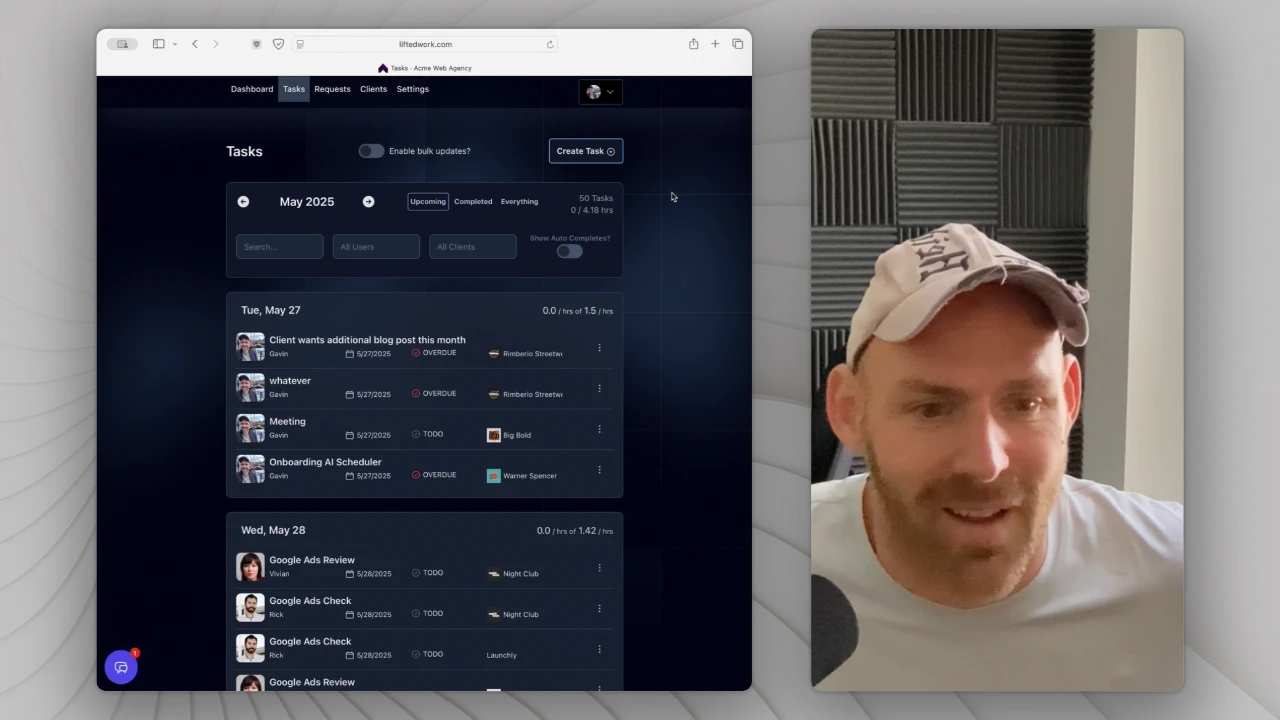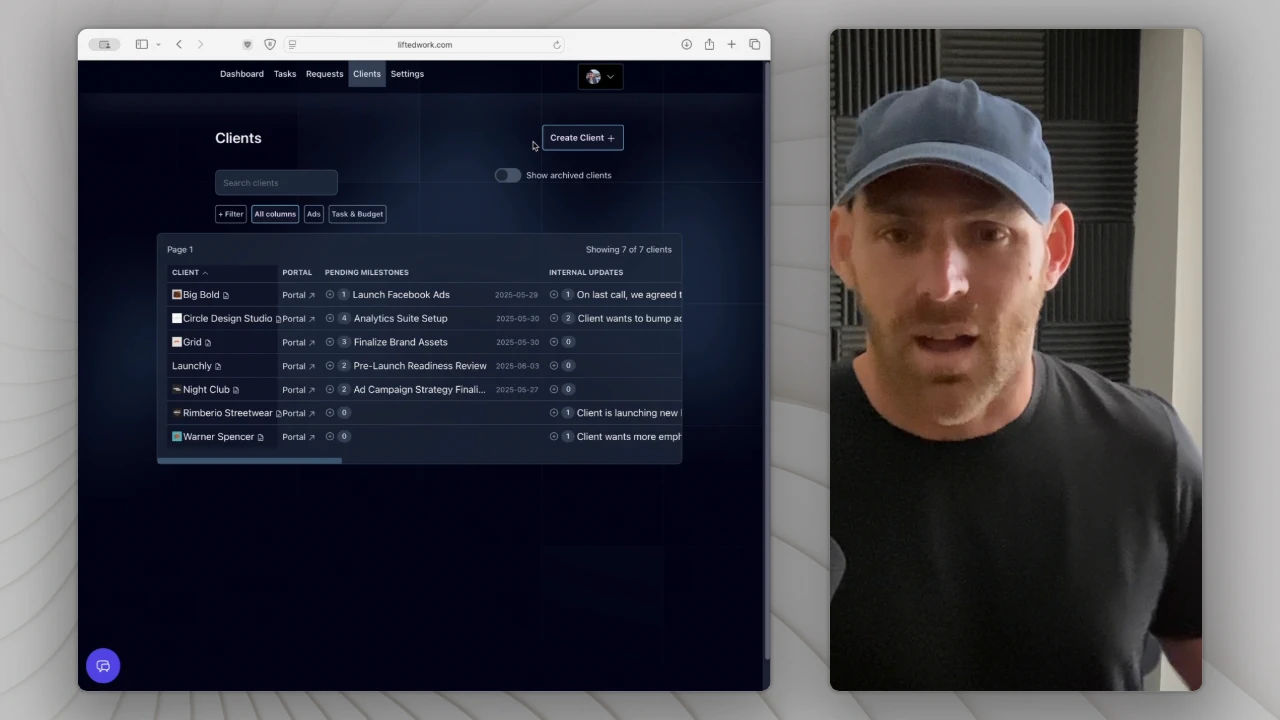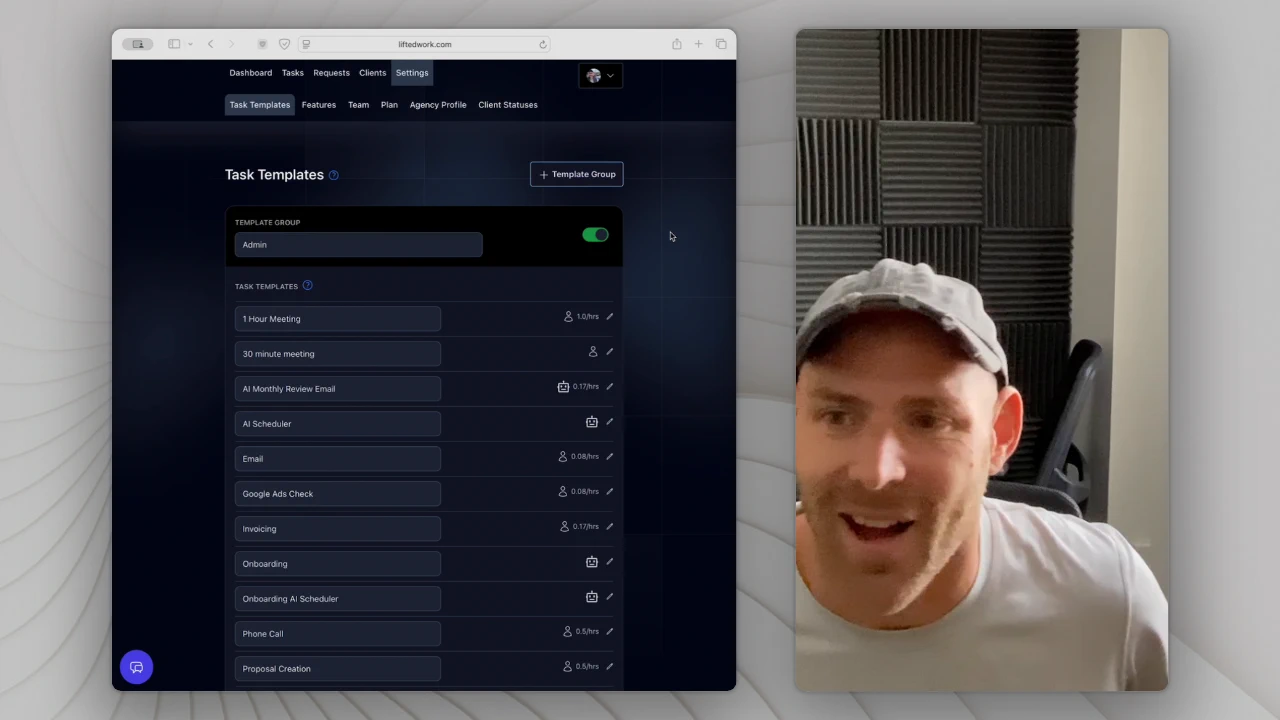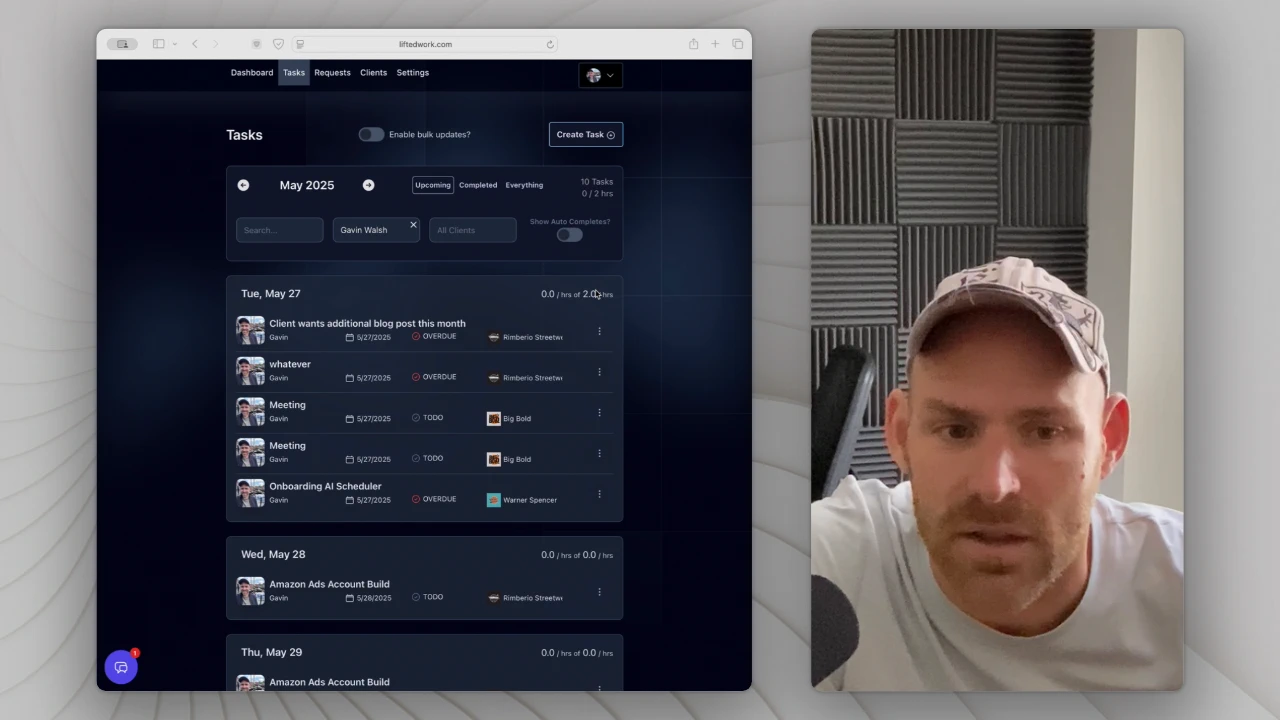How to Use the Lifty AI Sidebar in Lifted Work
Video loading...
This step-by-step guide shows how to use the Lifty AI sidebar in Lifted Work to create tasks, generate milestones, draft emails, and get insights using natural language prompts.
🤖 What Is the Lifty AI Sidebar?
The Lifty AI Sidebar in Lifted Work is a built-in chat assistant designed for agency admins and managers. It lets you use natural language to:
Create tasks in bulk
Generate milestones
Draft personalized emails for clients
Pull analytics on task volume and time spent
Automate common workflows
It’s like having a highly contextual operations assistant at your fingertips.
🚀 How to Open Lifty
Click the Chat icon in the bottom-right corner of Lifted Work
This opens your most recent Lifty chat session
Use the plus button (+) or “Switch Chats” to start a new one
Lifty will ask, “How can I help?” and is ready to receive prompts
Note: Access is limited to Admins and Managers
🛠 What Lifty Can Do
You can ask Lifty to:
Create single or recurring tasks
Generate milestones
Mark items as complete
Draft client emails
Pull task insights (e.g., total time spent on a type of task)
You can use mentions (@) to reference:
Task templates
Teammates
Clients
This brings in prebuilt instructions and context automatically.
✅ Example: Create Recurring Tasks
Let’s say you want to create a weekly task:
“Create a task every Monday for the next 4 Mondays for @Negative Keyword Review assigned to @Emily for @Big Bold.”
Lifty will:
Pull in the task template (if mentioned)
Use the assignee and client info
Create all 4 tasks with correct due dates
You can run this for anything—from ad reviews to blog edits to client check-ins.
🧱 Example: Create a Milestone
Want to create a milestone with natural scheduling?
“Create a milestone for SEO Overhaul for @Big Bold for next Friday.”
Lifty will:
Schedule the milestone
Attach it to the correct client
Add it to their portal
You can then mark the milestone as complete via prompt or manually, and the client will see it reflected immediately.
📊 Example: Ask for Task Insights
You can ask:
“How much time did we spend on Google-related tasks for @Big Bold this month?”
Lifty will:
Search completed tasks
Group by keyword
Show time averages, task counts, and totals
Use this to spot workload trends, justify time spent, or support performance reviews.
💌 Example: Draft a Client Email
Want to draft an outreach email?
“Draft an email for @Rimbaro Streetwear about the benefits of SEO. Make sure to use the client overview.”
Lifty will:
Pull in the client contact name
Pull in the user’s name (you) and agency branding
Reference the client overview for relevant tone and details
Generate a complete, personalized email
From there, you can:
Edit or approve the draft
Click Send Email
The client will receive it with a magic link to view the update in their portal
Emails stay in draft mode until you choose to send them.
📇 How Does Lifty Know Who to Email?
Lifty pulls the recipient from your Client Contacts under Settings > Contacts.
Make sure:
A primary contact is listed
They have a name and email
You’ve assigned them to the right client
Then, Lifty can route all client-facing emails correctly, with no extra input.
💡 Pro Tips for Power Users
Use @task templates to reuse SOPs and instructions
Use relative dates like “next Friday” or “every Monday”
Add prompts inside task descriptions to run AI actions automatically when marked complete
Ask Lifty for a summary of milestones due this week, tasks completed today, or anything else you need to stay in control
🧠 Why Use Lifty?
Lifty is more than just a chatbot—it’s an embedded AI assistant that:
Knows your clients
Understands your team
Connects to task templates
Automates your operations
Speeds up your planning
And best of all, it works inside your existing workflow—no switching tools or losing context.



